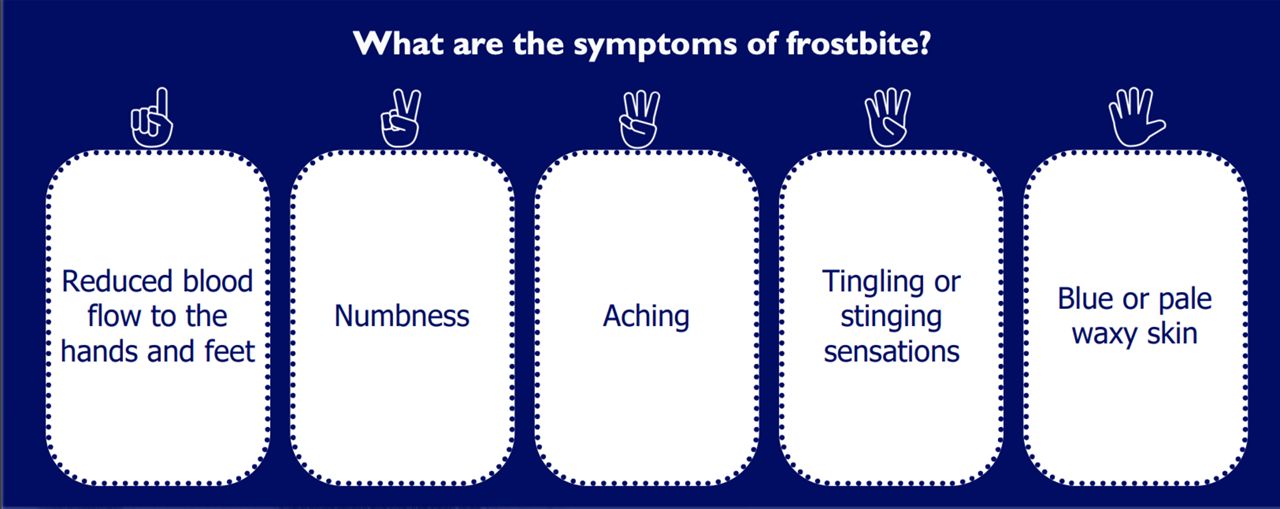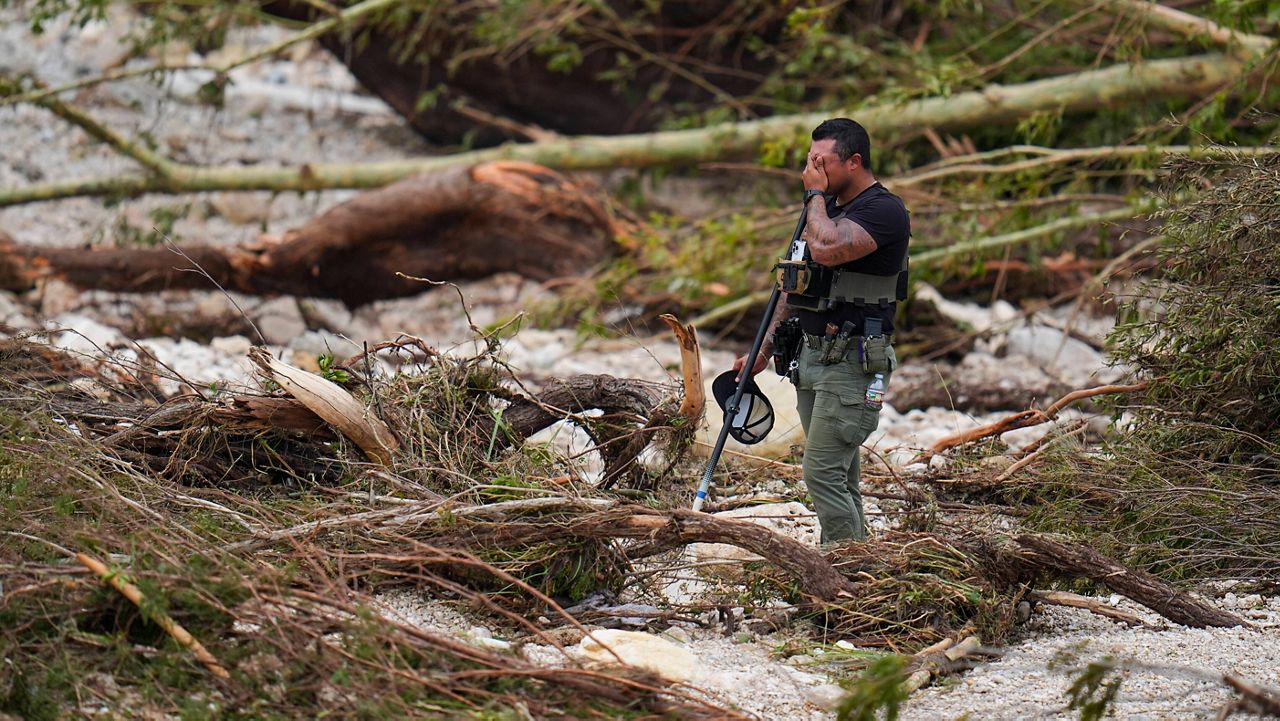WISCONSIN — With the temperatures continuing to drop this winter, Wisconsinites need to be aware of the dangers that come with the cold.
The Centers for Disease Control and Prevention (CDC) labels frostbite as a type of injury caused by freezing, leading to a loss of feeling and color in the areas it affects. In severe cases, frostbite can cause permanent damage and may even require amputation to the affected body part.
Extremities like fingers, toes, noses and ears are most at risk.
Frostbite can happen in minutes in temperatures deemed as extreme cold. Ready Wisconsin uses a list of terms to describe extreme cold. These terms include cold weather advisory, extreme cold watch, extreme cold warning, wind chill and polar vortex.
As outdoor activities continue throughout winter, the Wisconsin Department of Health Services (DHS) urged Wisconsinites to be aware of the warning signs and gave tips on how to treat someone with frostbite.
Know the warning signs of frostbite:
 (Graphic courtesy of Wisconsin DHS)
(Graphic courtesy of Wisconsin DHS)

How to help someone with frostbite:
If you notice someone showing signs of frostbite, it is important to move to a warm area as soon as possible. If a warm area is inaccessible, seek medical attention right away.
- Do not walk on frostbitten feet or toes
- Warm the affected area using body heat or warm (not hot) water
- Do not use a heating pad, fireplace or radiator for warming the affected area
- Do not massage the frostbitten area; doing so may cause further damage
How to prevent frostbite:
Health officials explained frostbite can be prevented by following five simple steps:
- Keep moving, exercise helps, but exhaustion does not
- Cover hands with mittens rather than gloves
- Wear warm, loose-fitting layers that cover your skin, with a waterproof, windproof outer layer
- Cover ears by wearing a hat
- Limit time outside spent in cold, windy or wet environments
For more information on frostbite and how to prevent it, visit the CDC’s extreme cold webpage or contact your Wisconsin health department.






